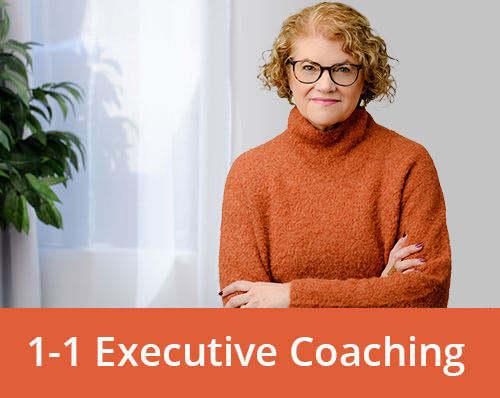Mentoring is often thought of to help younger employees develop by passing on the wisdom of more experienced leaders. And it is! But that model ignores all the wisdom that many people have to give those of us who sit in leadership positions.
And there is a lot that early career employees have to teach us. Getting the information and insight flow moving “up” the age/experience ladder and an organization is called reverse mentoring. It offers a fresh perspective on mentoring that flips the traditional dynamic, empowering younger employees to share their expertise and perspectives with senior colleagues and bridging generational gaps in the workplace. The purpose of reverse mentoring is not only to facilitate the acquisition of new skills by senior colleagues, but also to cultivate a connection with the younger generation.
These are some of the tangible benefits of reverse mentoring, but I personally think the single biggest benefit is to help experienced leaders maintain fresh perspectives, challenge themselves to learn new things, stay humble and refine their coaching skills. When they do this, mentors become more effective leaders, and they also contribute to building a subtle sense of confidence in their mentees.
The origins of reverse mentoring
The origins of reverse mentoring can be traced back to the 1990s when Jack Welch, the former CEO of General Electric, introduced a formal reverse mentoring program. The initial objective of this program was to help senior executives gain knowledge about the internet and adapt to new technologies by connecting them with younger mentors. While Welch focused on technology skills development, he also created a new mentoring format that has gained widespread recognition and adoption in organizations across various industries.
Reverse mentoring has become an increasingly popular way for organizations to bridge the generational gap in a number of areas beyond technology, making reverse mentoring important in today’s diverse workforce. By establishing a reverse mentoring relationship, multiple age groups can benefit from shared knowledge and experiences.
Reverse vs traditional mentoring
Traditional mentoring involves senior staff guiding junior employees on their career paths and skill development. Mentors often help their mentees in focus areas such as:
- Deciding on career objectives
- Identifying technical skills to develop
- Learning how to navigate office politics and interpersonal dynamics
- Practicing how to advocate for themselves and take appropriate credit for their work
- Understanding different stakeholders’ motivations and roles to play in the work
- Finding resources to help them overcome challenges they face in the workplace
- Gaining context and perspective on business models and dynamics underlying their work
Reverse mentoring flips this dynamic, allowing junior employees to share their expertise and perspectives with senior staff. This unique mentoring relationship emphasizes reciprocal respect and two-way learning, providing junior individuals with the opportunity to hone their leadership abilities and share their knowledge with more senior personnel. Mentors often help their mentees in focus areas such as:
- How new technologies affect customers and employees
- Changing values, motivations and trends that affect customers and employees
- How front line and early career employees view the company (and it’s products/services)
- How different socio-economic, racial, demographic and other groups view the company (and it’s products/services)
- How company policies affect employees’ day-to-day work and lives
Reverse mentoring has been shown to help senior managers improve diversity and inclusion, bridge generational gaps, and increase digital capabilities.
The Inclusion Advantages of Implementing a Reverse Mentoring Program
Anyone can engage in reverse mentoring simply by engaging with people in different generations or demographic groups. On a company scale, when programmatically supported, reverse mentoring offers many more systemic and scalable benefits, such as:
- Enhancing retention of millennials, women and racially diverse employees
- Fostering diversity acceptance in the culture
- Creating greater sensitivity about the impact of various company policies on different demographic groups
Promoting generational inclusivity is only one type of reverse mentoring opportunity available to senior management, which is often a homogeneous demographic group in most organizations. Reverse mentoring can be enhanced by structuring programs that intentionally pair different age groups and demographic groups. This can give senior white leaders greater access to the lived experience of employees of different genders and racial groups.
When senior employees connect and collaborate with those unlike them on a one-to-one level, they often gain insights into how other groups experience everything from the commute to work to a company policy on work-at-home options.
Enhancing diversity and inclusion
Reverse mentoring across demographic boundaries can significantly improve diversity and inclusion within the company culture by providing underrepresented employees with opportunities to share their perspectives and experiences with senior staff. When senior employees become exposed to perspectives and experiences outside their own life, their appreciation and understanding of employee challenges can expand.
For example, one senior executive, upon learning the cost of commuting to the suburbs for city-dwelling employees, became an advocate for public transportation reimbursement and company shuttle programs. Another became more sensitive to some of the vocabulary the executive team members used, such as the use of the term “non-American” to refer to products sourced globally, and the way it made international employees feel unwelcome. The executives made an intentional shift to refer to “global” products, which built a feeling of inclusivity–and commitment to international markets–which had not existed before.
Bridging the generational, gender and racial divides
Reverse mentoring helps bridge generational, gender and racial divides by fostering collaboration and knowledge sharing between employees of these groups. Perhaps even more importantly, it can help build greater respect between people in these different categories.
Examples of pairings to help bridge these kinds of divides include:
- Older women with younger men (and vice versa)
- Black women with white women
- Asian employees with black employees
- Hispanic employee with black employees
- Leaders from higher socio-economic categories with employees in lower socio-economic categories
The kinds of one-to-one relationships that can be built this way improve the individual’s personal understanding of what different groups experience, and when engaged systemically also contributes to the overall success and adaptability of the organization.
Designing an Effective Reverse Mentoring Program
To get these kinds of benefits from a reverse mentoring program, it is important to design the program with clear objectives, participant recruitment, and ongoing monitoring of success. With such intentional design, organizations are more likely to build reverse mentoring programs that effectively support the development of both mentors and mentees, while also aligning with company goals.
Setting clear objectives
Establishing clear objectives for a reverse mentoring program is essential to ensure that it is in line with company goals and focuses on particular areas of development. Some objectives for a reverse mentoring program may include:
- Assisting senior employees in developing new perspectives and refining coaching and mentoring skills
- Exchanging specific skills and knowledge with younger colleagues
- Stimulating new viewpoints on how to achieve corporate objectives
- Recognizing biases and learning to counter them
- Promoting engagement
- Enhancing established leadership practices
Recruiting and matching participants
Even if part of your goal in creating a reverse mentoring program is to improve diverse relationships, it’s important that the participants receive specific, personal benefit from the program as well. Recruiting and matching participants based on their career needs and business expertise is a crucial aspect of designing a successful reverse mentoring program. Organizations can identify suitable mentors and mentees through internal company communication channels and match them using a process that considers their:
- Career and business objectives
- Expectations
- Skills and abilities
- Preferences
To promote the program and encourage participation, organizations can utilize internal company communication channels such as emails, newsletters, and intranet sites. When pairing mentors and mentees, it is important to consider the mentor’s skill set and the mentee’s desired improvement areas, as well as any shared personality traits and interests.
Monitoring and evaluating success
Monitoring and evaluating the success of a reverse mentoring program, like any mentoring program, is essential to ensure its effectiveness and optimize it for future use. By tracking progress, gathering feedback, and measuring outcomes against set objectives, organizations can gain valuable insights into the overall success of their program. Key performance indicators that can be used to monitor and evaluate success include:
- Satisfaction scores for the program and the company (including inclusion scores)
- Engagement activity
- Learning and development targets
- Retention rate
By closely monitoring these indicators, organizations can continually refine their reverse mentoring program to better address the needs of both mentors and mentees.
Overcoming Challenges in Reverse Mentoring
Implementing a reverse mentoring program is not without its challenges, such as resistance from senior employees, concerns about time commitment, and ensuring the program remains relevant to participants.
Resistance from senior employees
Resistance from senior employees can be a significant challenge in implementing reverse mentoring programs. To overcome this resistance, organizations can highlight the benefits of reverse mentoring and demonstrate how junior colleagues can fill knowledge gaps and provide valuable perspectives on current technologies, trends, and best practices. This kind of information is generally important, but it’s often critical to personally recruit individual leaders by learning their personal motivations and appealing to them.
It’s also important for senior leaders to hear from their peers, who have participated and benefited from the programs. Sharing success stories helps mentors and mentees believe their time commitments will be rewarded. By emphasizing the value of reverse mentoring and fostering a culture of open-mindedness and mutual respect, organizations can effectively address resistance and encourage senior staff to embrace the learning opportunities presented by reverse mentoring.
Time commitment concerns
Ensuring time commitment for a reverse mentoring program can be challenging, as senior employees often have tight schedules and may be hesitant to allocate time for mentorship relationships. To address time commitment concerns, organizations should outline a clear schedule for the program and emphasize its benefits for both mentors and mentees. Providing training that helps participants set expectations around time commitments can also be very helpful. Usually when the mentors and mentees jointly agree on time commitment, concerns about this factor reduce.
Relevance to participants
As in any recruitment program, it’s important to ensure that the program provides real benefits to all participants. In particular, many mentoring programs fall victim to a belief that mentors only need to feel the “joy of giving back” to want to stay engaged in the program. While this motivation is strong and can work for a certain period of time, it’s rarely enough to make up for the extra time and energy commitments required when things get busy and stressful.
In additional to personal recruitment efforts mentioned above, where the program leaders take the time to help program participants find their personal connections to the program, there are other things that can be done to help everyone find meaning in the reverse mentoring efforts:
- Providing structured introductions/training
- Providing personal feedback and support opportunities
- Offering reminders and accountability check ins
- Celebrating successes
- Recognizing participation and achievements made through the program
In addition, organizations can tailor the program to address the specific needs and interests of different departments and groups within the organization, focusing on areas such as skill development, knowledge sharing, and addressing biases.
By continually refining the program based on feedback from participants, organizations can ensure that their reverse mentoring program remains beneficial and engaging for all involved.
Reverse mentoring is a powerful tool for fostering collaboration, bridging generational divides, and promoting diversity and inclusion within organizations. By designing effective reverse mentoring programs and engaging people individually, organizations can unlock the full potential of reverse mentoring and create a more inclusive, innovative, and competitive work environment.
NOTE: This post was written with the help of an artificial intelligence research assistant. Comments? Please share.







